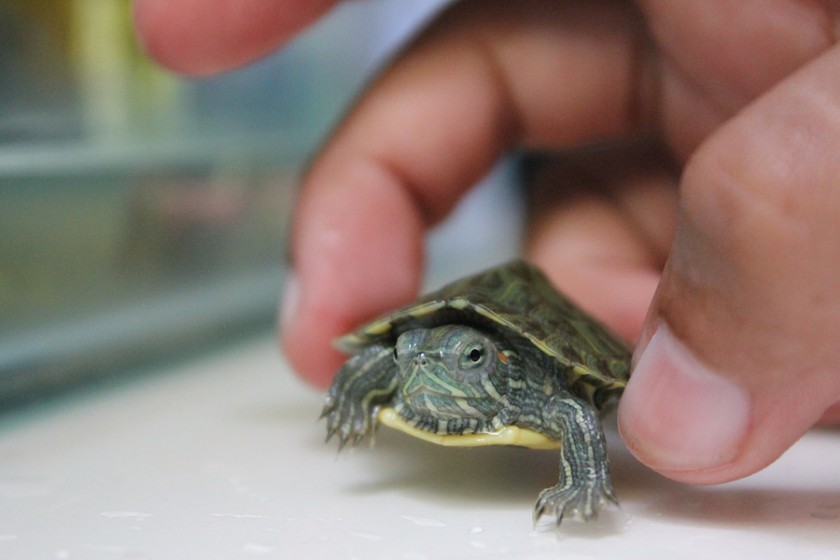
Raising baby turtles can be a challenging task. This article aims to provide an overview on how to raise both baby turtles that are land turtles and baby turtles that are water turtles.
Baby Land Turtles
The first year of a baby land turtle’s life should be spent in a twenty gallon aquarium that has been designed and planted to act as a vivarium. Fill the bottom two inches of the aquarium with potting soil that is perlite and Styrofoam bead free.
In it plant low light house plants like tropical moss, ivy, creeping figs, ferns, etc. Some experts say that tropical moss is the best. The reason you plant the soil at the bottom is because baby land turtles like to dig and will sometimes dig themselves completely under the soil!
The soil also helps the baby turtles develop their claws and it absorbs and controls the odor of the urine (which can be very pungent when released from the baby turtle). The soil also helps maintain a workable level of humidity in the tank.
Use an aquarium light that has been installed with a plant light bulb to give light to the aquarium and replace the light when it gets dark spots on it. Keep the top of the aquarium open to give it good ventilation.
Don’t worry about heat lamps or hot rocks because they will dry out the aquarium. Keep the room temperature between seventy and seventy five degrees.
Make sure to provide clean water every day. Water is best provided in shallow bowls that aren’t slippery—this will let the baby turtle get into and out of the water easily and they are also easy to remove and clean. The lip of the bowl should be level with the soil so that the baby turtles are better able to get into and out of it.
Baby Water Turtles
It is harder to keep baby water turtles because they are incredibly active and require more work to keep them clean. The baby water turtle’s tank is mostly water.
The water is kept at three to four inches in depth and you can place a few small planters in the tank—these planters are perfect basking spots for the baby turtles and a great place to plant water plants for them to eat.
The planter also provides them with some natural cover and a place to hide. The planter should not have any drain holes and you can put large pebbles on top of the soil. Use inexpensive house plants in the planters because any part of the plant that finds its way to the water will get eaten by the turtles.
The bottom of the baby water turtle tank does not need any soil; a simple flooring runner will be just fine. It protects the glass of the aquarium and gives the baby turtles a little big of traction when they need it. The aquarium water needs to be heated to about seventy five degrees during the winter and in the summertime the baby turtles can be moved to outdoor turtle tanks.
